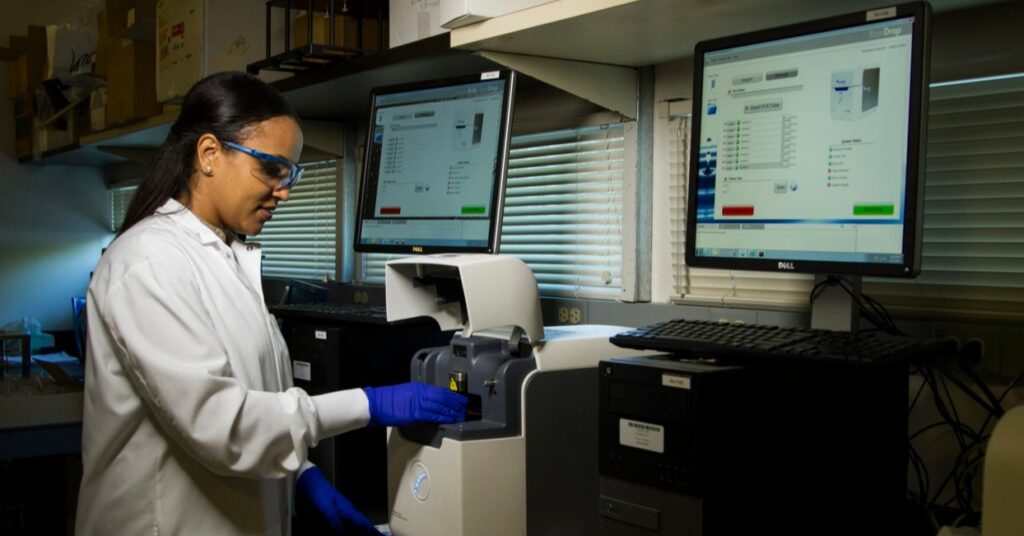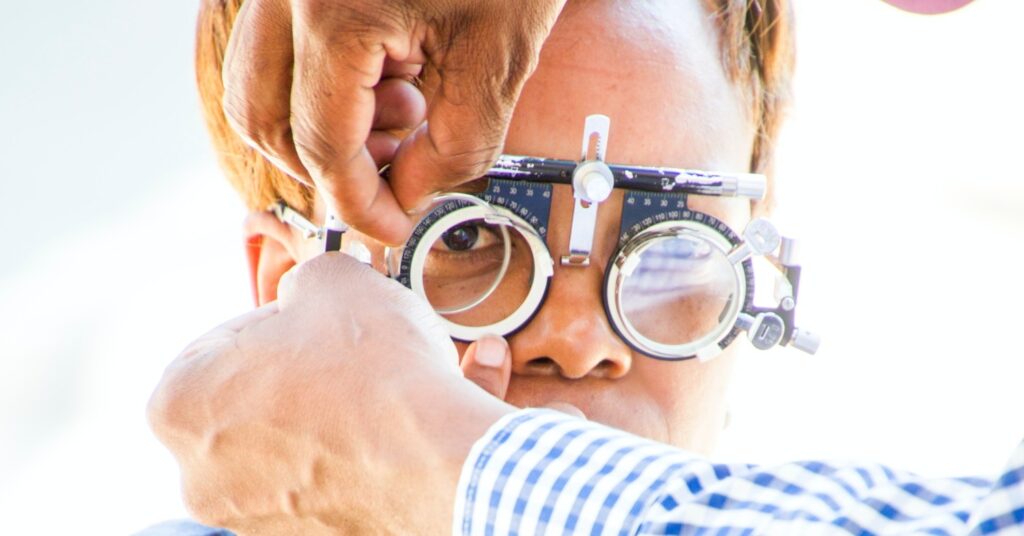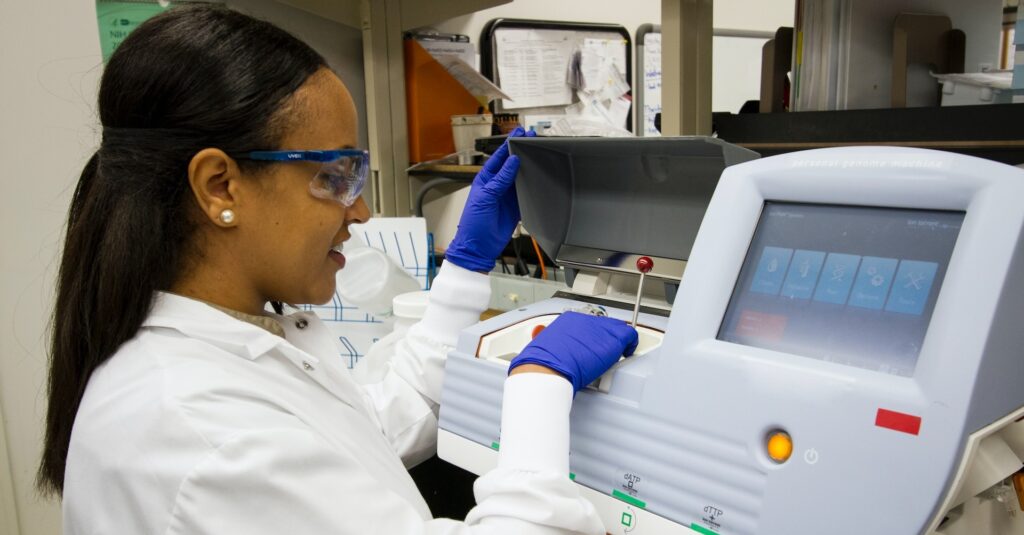
What Is the Epidemiological Triangle?
The epidemiological triad or triangle is an organized methodology used [...]

Maybe you can’t see the whiteboard at the front of the room as well as you once did. Perhaps you’re squinting to read this right now. It’s time to see an eye doctor, but you’re confounded by the dizzying array of similar-sounding healthcare professionals. Do your eye care needs require an ophthalmologist or an optometrist? How about an optician? What’s the difference? And did they have to make ophthalmologist so hard to spell?
This article answers most of those questions (although you’re on your own with the spelling thing) by discussing:
When people casually talk about going to an eye doctor, they probably mean an optometrist–even though optometrists don’t go to medical school. Like MDs, however, optometrists complete years of post-undergrad study en route to a Doctor of Optometry (OD) degree.
Optometrists are the people you see about eyeglasses and contacts, the folks who administer comprehensive eye exams. They make you read tiny rows of letters and look through big machines straight out of a steampunk nightmare (a phoropter, if you want to get all technical about it). Optometrists also check for vision-related issues such as glaucoma, cataracts and complications from diabetes.
In short, optometrists conduct extensive eye exams and help their patients manage eye issues. They write prescriptions for glasses and contacts. They may prescribe drugs and perform relatively minor in-office procedures, such as draining styes.
While optometrists are not medical doctors, they also go through years of rigorous training. Optometry school generally starts after three or four years of undergraduate study. Most programs look for applicants with a strong science and math background, including undergrad courses in chemistry, biology and physics. Prospective optometrists must pass an entrance exam, the Optometry Admission Test (OAT).
Once someone makes the cut for optometry school, it’s time to get ready for four years of All Things Eyes. The American Academy of Ophthalmology lays it out on a web page comparing what its members do to what optometrists do: “The four-year optometry curriculum includes contact lenses, optics, vision sciences, sensory processing, vision therapy, practice management, and courses related to basic medical sciences and eye diseases.” Using the State University of New York (SUNY) School of Optometry as a model, the academy estimates that students spend 572.5 hours covering basic sciences and 1,481.5 hours studying optometric areas of focus and non-clinical areas, with an additional 635 hours of lab work and instruction on ocular disease.
Field training is an important part of the process. At the New England College of Optometry (NECO), third-year students train by working directly with patients at community health centers, VA hospitals, schools and private practices. By the fourth year, they’re ready for clinical rotations.
NECO, America’s oldest continuously operating optometry college, is preparing the first hybrid online/in-person degree program offered by a doctoral-level school (Noodle is a partner in the program). Only 23 U.S. schools spread across 17 states currently offer optometry education.
Prospective optometrists must pass exams administered by the National Board of Examiners in Optometry. Requirements vary by state. The first exam, administered in the third year of school, covers basic science and ocular physiology. The second, administered in the fourth year, covers treatment and diagnosis of eye conditions. The third and final segment, a practical exam, evaluates students working directly with patients.
Optometrists earned a median annual income of just over $124,000 in May 2021. It’s a growing field, with employment projected to increase 10 percent from 2021 to 2031–a faster-than-average rate. About 1,700 job openings are predicted annually over the next decade as a result of job growth and attrition.
A medical degree is a major distinguishing feature between ophthalmologists and optometrists. While ophthalmologists may also set people up with glasses and contacts, they’re more likely to handle other, less-routine and more-complex eye issues.
Ophthalmologists treat eye diseases and perform eye surgeries; some conduct research on eye diseases and vision disorders. Need LASIK or cataract surgery? Look to an ophthalmologist. Eyewear manufacturer Warby Parker offers a broad overview of potential ophthalmologist responsibilities:
Want to be an ophthalmologist? Settle in for the long haul, school-wise. Medical school training includes general patient care and a one-year internship. Once someone dispenses with the little matter of earning an MD, it’s time for a three-year ophthalmology residency training program. But wait–there’s more! Approximately 40 percent of ophthalmology students move on to a fellowship program to concentrate on a subspecialty, requiring another year or two.
All of this adds up to five or six years of training after medical school. Ophthalmologists must commit 612 hours to lab work and classes on ocular disease and management on top of their medical school training. The Accreditation Council in Graduate Medical Education (ACGME) requires aspiring ophthalmologists to handle at least 3,000 outpatient visits with patients suffering from a wide spectrum of eye diseases.
After graduation comes certification. The American Board of Ophthalmology of the American Board of Medical Specialties does the honors. Its two-step certification process begins with a 250-question written exam. Once candidates successfully pass that, they move on to an oral exam during which they explain how they would treat patients in different scenarios.
The 2020 average compensation for American ophthalmologists was $379,000 in 2020. Those whose compensation packages include incentive pay typically received a quarter of their income—approximately $83,000—in bonuses.
Opticians are the third opt in the op(h)t vision care trifecta. They’re the eye care professionals who get you going with glasses and contact lenses. While they don’t do eye exams, they may take measures such as the distance between pupils to assure the best match of patient, frame, and eyeglass lenses. The educational load for opticians is much lighter than for optometrists or ophthalmologists: Opticians typically train for a year or two, earning their stripes via an associate’s degree, certification program or apprenticeship with an eye doctor.
While there’s some overlap between optometrists and ophthalmologists, the former tends to be a generalist and the latter a specialist. Optometrists keep tabs on your overall eye health and fill in the numbers you need to get the appropriate vision correction; they also check for other eyecare-related conditions like diabetes, hypertension, and cancer. Ophthalmologists can do those same things, but more often handle specialized treatment like surgery or treatment of systemic eye diseases.
Keep that in mind next time you’re reading an eye chart or looking through a phoropter.
Questions or feedback? Email editor@noodle.com

The epidemiological triad or triangle is an organized methodology used [...]

A family nurse practitioner (FNP) provides comprehensive primary health care [...]

FNPs practice in a broad range of health care settings. [...]

Some epidemiologists assist pharmaceutical companies in developing safer medicines. Some [...]

A Bachelor of Science in Nursing (BSN) is a four-year [...]
Categorized as: Optometry, Nursing & Healthcare